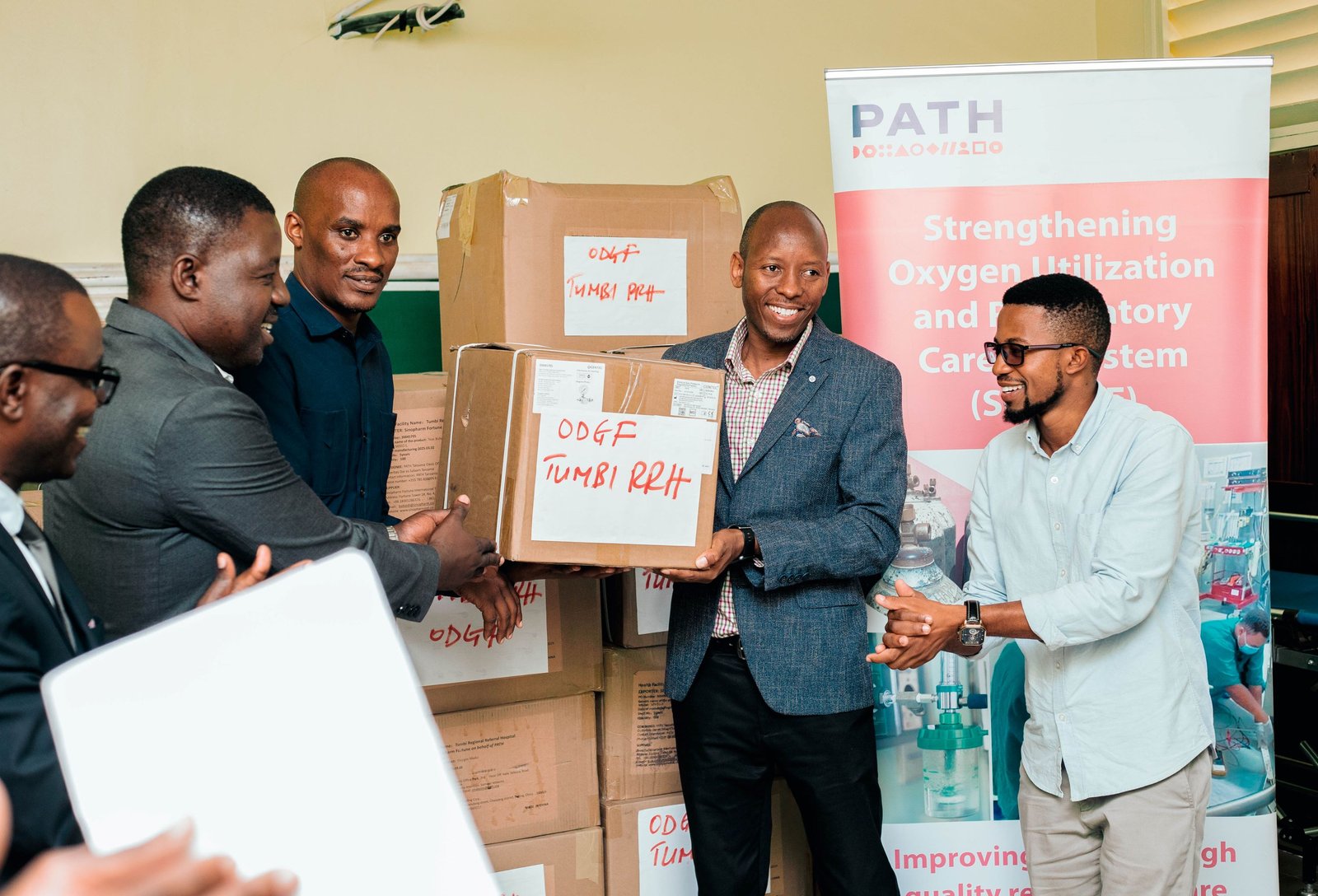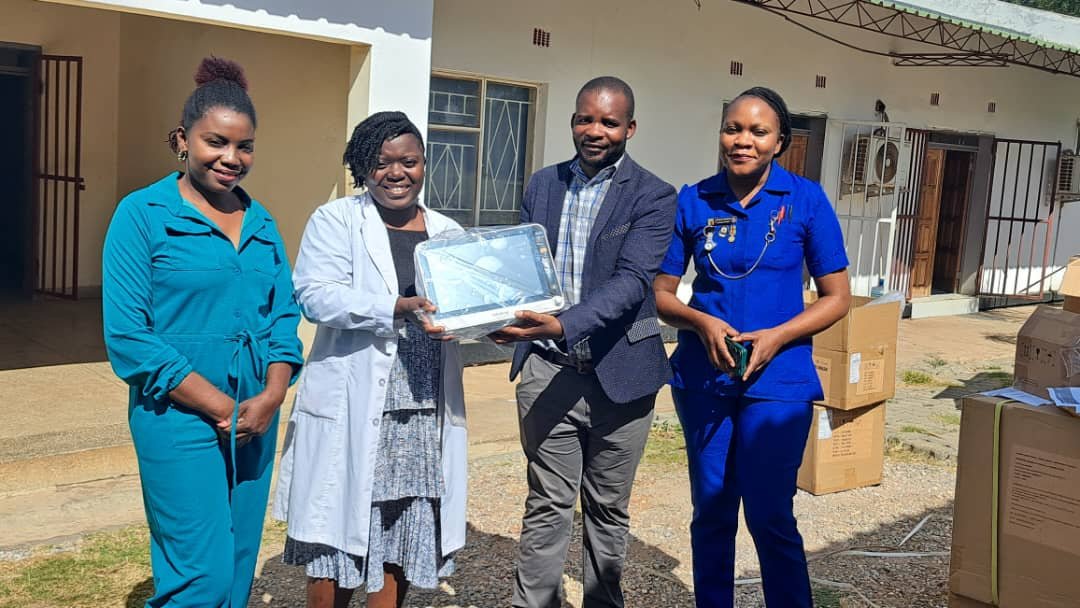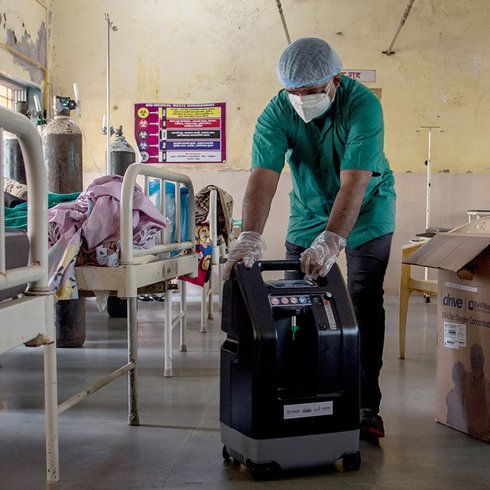Medical oxygen is a lifesaving medicine with no substitute. Over 374 million newborns, children, and adults need oxygen each year, with 82 percent of these patients living in low- and middle-income countries (LMICs). Yet 60 percent of the world’s population lacks access to safe and affordable medical oxygen, with LMICs bearing the greatest burden.
Moreover, delivering oxygen can be complex. For patients to receive it, oxygen must be available at a health facility and supported by an effective delivery infrastructure, inclusive of necessary accessories, consumables, and related devices. If just one element of the system fails, oxygen therapy can become inaccessible. Managing the entire chain—from production to patient—involves coordination across multiple layers and can be challenging for health facilities in many LMICs.
An initiative to keep essential oxygen equipment running
COVID-19 investments increased access to large oxygen equipment at many health facilities across LMICs, including oxygen generation plants, liquid oxygen tanks, and concentrators. But many facilities continue to face the challenge of keeping this equipment operational. With a grant from the ELMA Foundation, PATH established the Oxygen Delivery Gap Fund (ODGF) to identify and procure consumables, accessories, and related devices, and to fund repairs essential to keeping equipment running.
“Our new portable oxygen machine has helped greatly with referrals. And oxygen masks of different sizes ensure our pediatric and nursery patients are receiving the care they need using the necessary equipment.”— Yanjanani Mawindo, Hospital Matron, Salima District Hospital, Malawi
PATH worked with the ministries of health in five countries—the Democratic Republic of the Congo (DRC), Kenya, Malawi, Tanzania, and Zambia—to identify top-priority health facilities for the initiative. To maximize health impact, facilities focusing on newborn, maternal, and child health and those serving large populations, were prioritized. Next, working with facility staff, the team zeroed in on gaps in the oxygen delivery system and how ODGF could help fill those needs. Final decisions were made balancing costs, procurement consolidation, and the anticipated impact on oxygen accessibility.
Getting supplies to health facilities—and to patients
PATH assessed supply gaps at 41 health facilities across the DRC, Malawi, Tanzania, and Zambia, selecting 15 to participate in the ODGF initiative. In Kenya, 24 additional facilities were chosen to receive flowmeters and breathing circuits. The initiative prioritized addressing gaps across the entire oxygen delivery system at a smaller number of facilities to help close the oxygen access gap as thoroughly as possible. Additional supplies and devices were also provided to clinical and biomedical engineering training centers to strengthen broader system capacity.
A total of 119,101 products were procured across the five countries. To maximize cost-efficiency and impact, most funds supported consumables and accessories–such as masks, nasal cannula, flowmeters, and regulators–while a smaller share went to durable medical devices like pulse oximeters and concentrators. Notably, 97 percent of procured items procured cost less than US$1 each, demonstrating the effectiveness of investing in small, often overlooked components of the oxygen delivery system.

Outside the initial ODGF aim, an existing oxygen generation plant was also repaired at Charles De Gaulle Pediatric Hospital in Burkina Faso. This specific outcome not only allowed the hospital to supplement their on-site oxygen supply but also to provide cylinders to nearby Yalgado Ouédraogo University Hospital.
The impact of filling the oxygen supply gap
An estimated 791,959 patients annually will now have access to an improved oxygen delivery system at health facilities in the five countries that received oxygen supplies and devices through ODGF. For example, in the DRC, three hospitals now have enough pediatric cannulas to provide oxygen therapy to 13,000 children. In Malawi, five hospitals now have pulse oximeters needed to screen and identify the 11,953 patients who have hypoxemia (low oxygen in the blood) each year.
These health facilities have already begun orienting and training clinical staff with the new devices and consumables to reliably diagnose and treat hypoxemia, collaborating with biomedical engineering staff to operationalize the new equipment and accessories, and adding these items to their inventory management system for long-term maintenance.
“These contributions, such as patient monitors and other critical tools, have greatly improved our ability to manage and monitor severely ill children, ultimately leading to better health outcomes.”— Dr. Nfwama Kawatu, UTH–Children’s Hospital, Zambia
Moreover, the repaired oxygen generation plant in Burkina Faso now produces 340 liters of oxygen daily directly to bedsides across 12 wards at Charles De Gaulle Pediatric Hospital, which can serve up to 150 patients per day. And under a centralized production model, it is also supplementing Yalgado Ouédraogo University Hospital, the largest hospital in the country, with an additional 80 oxygen cylinders per week to meet its oxygen needs.

PATH staff deliver oxygen supplies from the Oxygen Delivery Gap Fund to Tumbi Regional Referral Hospital in Kibaha, Tanzania, which serves a population of over 2 million. Photo: PATH.
Overall, the ODGF initiative is helping to close the oxygen access gap for hundreds of thousands of people across six African countries. While the process demonstrated a number of challenges, such as long procurement timelines, accommodation to different brands and models of oxygen equipment, negotiations with suppliers, and coordination with multiple health facilities, the effort proved strong value for money, and the ODGF model has the potential to fill additional supply gaps in other health facilities across LMICs.



